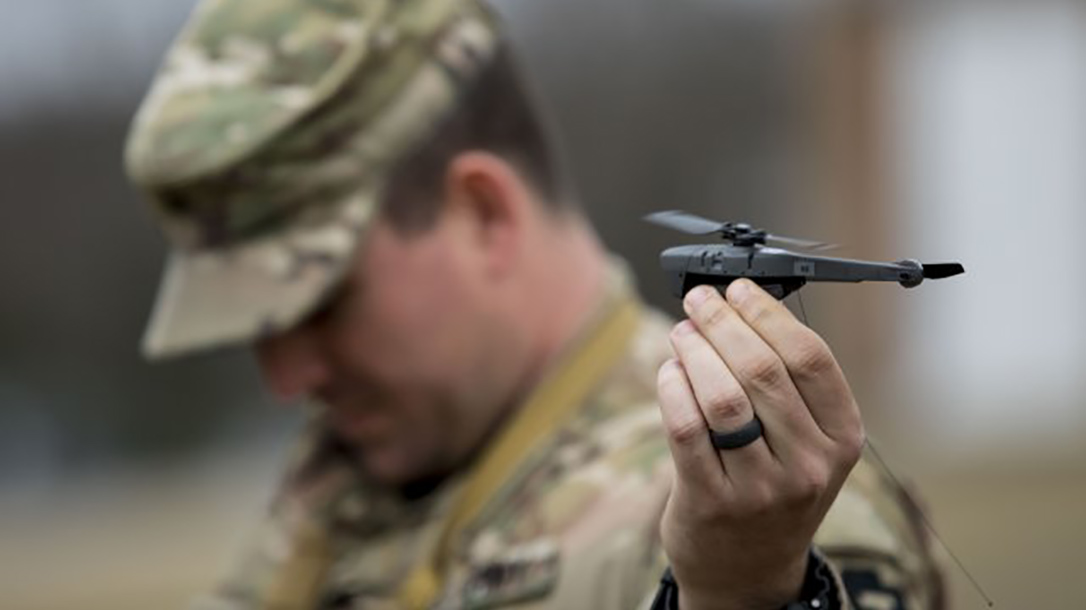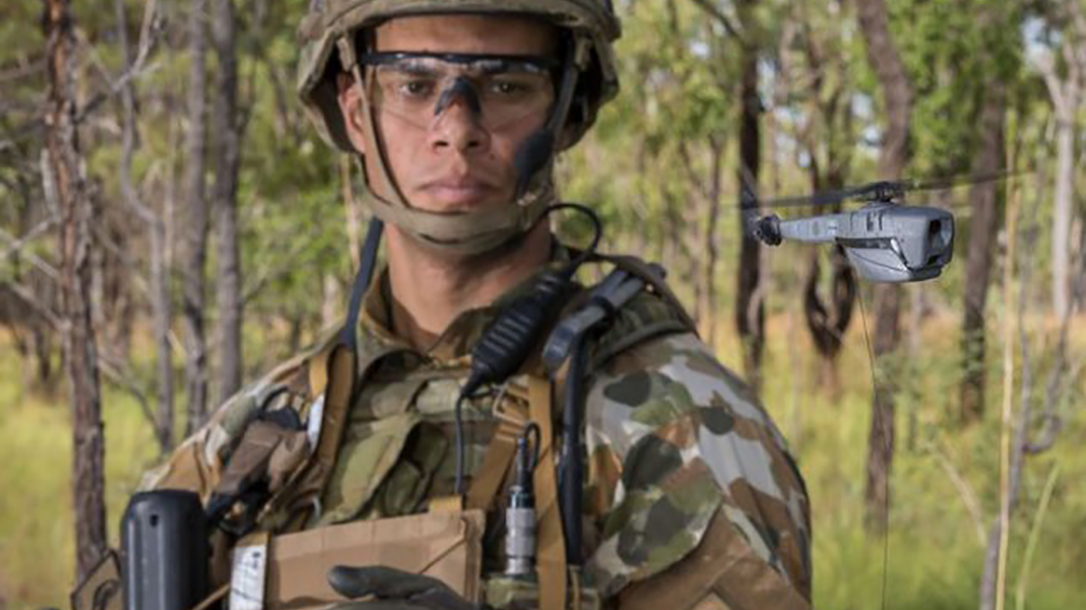The U.S. Army isn’t generally in the habit of doing things small, so when we saw that the service planned on buying 61 Black Hornet III small unmanned aerial systems, or SUASs, from FLIR, we took notice.
Black Hornet III Features
An Army news release says that the Black Hornet III weighs less than two ounces. Since Soldiers already carry a ton of gear, reducing their load is a top priority. As far as other features are concerned, the Black Hornet III is capable of flying a distance of up to two kilometers. It can remain in the air for 25 minutes. The system can take color photographs and videos simultaneously. It’s also equipped with thermal imaging, meaning it’s night vision-capable.
Advertisement — Continue Reading Below
Additionally, the Black Hornet III comes with a docking station to charge its batteries. When the Black Hornet III is in the air, another battery can be charged for when it returns. The system also comes with a monitor which is the size of a tablet computer. When you combine the weight of the SUAS, docking station and monitor, you’re still looking at less than three pounds overall.
All the commands and data sent between the Soldier and Black Hornet III are encrypted in order to ward off possible hackers.
The Black Hornet III is also quiet. So quiet, in fact, that Capt. WaiWah Ellison, the assistant program manager for Soldier Borne Sensors at PEO Soldier, said one Soldier didn’t even notice that the SUAS was flying just a few feet behind him during recent testing at Fort A.P. Hill in Virginia. In addition, its grey paint also gives it the ability to blend into the forest or jungles. Even if it’s seen, it could be mistaken for a small bird or large insect, the Army news release says.
Advertisement — Continue Reading Below
Uses and Delivery
In terms of possible uses, the Black Hornet III is designed to give Soldiers a quick look at what’s immediately ahead of them. So if they want to see what’s just over a hill or on the other side of a building or wall, they’d use the Black Hornet III. It’s not meant for long-term surveillance operations.
Ellison said 57 of the 61 Black Hornet III SUASs will be fielded to an unidentified infantry brigade combat team by the third quarter of next year.
Testing
Ellison added that the Black Hornet III underwent lab testing at Aberdeen Proving Ground in Maryland and Natick in Massachusetts earlier this year. In late January, Soldiers with the 3rd Brigade Combat Team, 10th Mountain Division put it through its paces at Fort A.P. Hill in Virginia. The feedback was largely positive, with Soldiers praising its reliability, technical efficiency and ease of use.
Advertisement — Continue Reading Below
It takes around 16 hours to train a Soldier how to pilot the Black Hornet III, Ellison said. To fly it, you hold it in your hand and rotate it 90 degrees one way, then 90 degrees the other way. This activates the system and gets the rotor spinning. You then turn on the monitor and acquire a GPS signal. The whole operation, from turning it on to flight, takes just over a minute.
More Black Hornet III testing will take place in October at Redstone Arsenal, Alabama, by Soldiers from 7th Infantry Division based at Joint Base Lewis-McChord.
Ellison said the Army is also looking at other SUAS systems, including models from AeroVironment and InstantEye Robotics.
Advertisement — Continue Reading Below

























